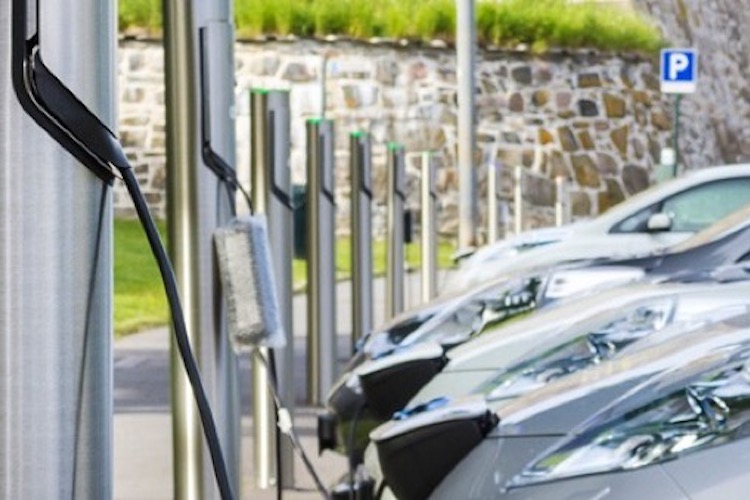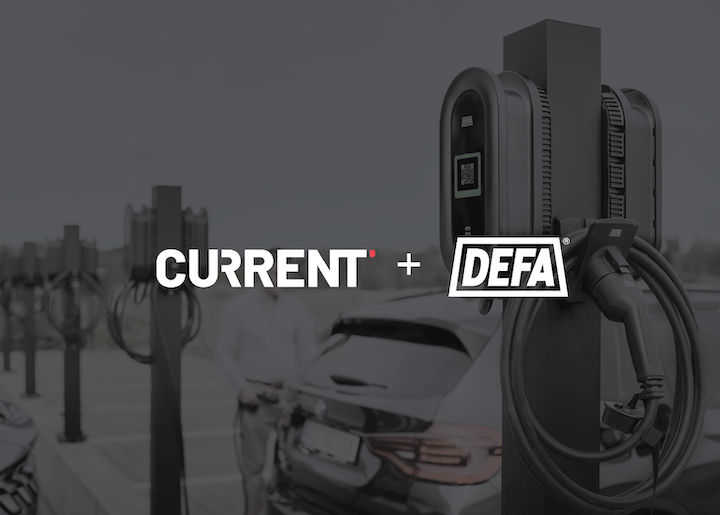
Charging stations all carry power. Smart charging stations also carry data. This opens up a ton of new possibilities.
In contrast to a conventional charging station, which is limited to understanding terms like 'battery full' or 'battery empty,' a smart charging station is a sophisticated communicator – it speaks with both EVs, users and administrators.
The result? Cheaper, more energy-efficient and more sustainable EV charging.
Keep reading to learn more about smart EV charging.
SMART EV CHARGING EXPLAINED IN SIMPLE TERMS
First, this is what traditional (‘dumb’) charging looks like: EV drivers plug their vehicles into a charge point. Maximum charging power is provided until the EV battery reaches 100% SoC, at which time it stops charging automatically.
In smart EV charging, an electric vehicle and a charger share a data connection, and the charger shares a data connection with a charging operator and an energy utility. In other words, the charger automatically transmits important data to the charging operator and energy utility whenever an EV is plugged in, so they can optimise the charging.
Unlike traditional charging, smart charging allows the charging operator to manage how much energy is delivered to each plugged-in electric vehicle. A central system coordinates and manages the charging process. Rather than charging all vehicles at the maximum capacity of the charge point, the central system takes over and makes intelligent decisions. Depending on the number of people using electricity at that time, the amount used can vary, putting less pressure on the grid.
It allows fleet operators - for example, pizza delivery services - to have fast-charging stations available during operating hours, but resume normal power output after hours. Additionally, they will benefit from prioritizing output for cars with nearly empty batteries.
A future-proof system
Smart EV charging makes it easy to add and remove features to create a system that meets your needs. Existing charging stations can also be updated to include new features. This makes smart EV charging future-proof. Adapting to changing needs and demands will lead to new features being added to the smart system over time.
With smart charging, electric cars can interact with the power grid in a symbiotic way - they support one another. Smart charging makes this connection possible and prevents EVs from adding unnecessary strain to the grid.
HOW DOES SMART EV CHARGING WORK IN PRACTICE?
The whole concept of smart charging is to connect charging points with users and operators.
When an EV is charging, information is transmitted between the vehicle and charger and often a centralised cloud-based charging management platform. For example, the local grid's capacity and the way energy is currently used at the charging site can be tracked.
The platform analyses and visualises this data in real-time. This way, it can be used to make automated decisions about the charging of EVs.
This allows charging operators to control and regulate energy usage easily and remotely from one platform, website or mobile app. In addition, EV owners can monitor and pay for their charging sessions through a mobile app from anywhere, at any time. Both charging and billing are handled in one digital solution.
Connected to the cloud, charging stations can be managed based on a variety of signals, such as the number of other vehicles being charged or the electric devices being used nearby. Smart EV charging is crucial to the development of a sustainable energy system that primarily utilises renewable energy sources.
SUMMARY
With smart charging, EV power consumption can be optimised based on the current state of the energy grid. It is therefore possible to optimise how costly charging events are for EV drivers.





